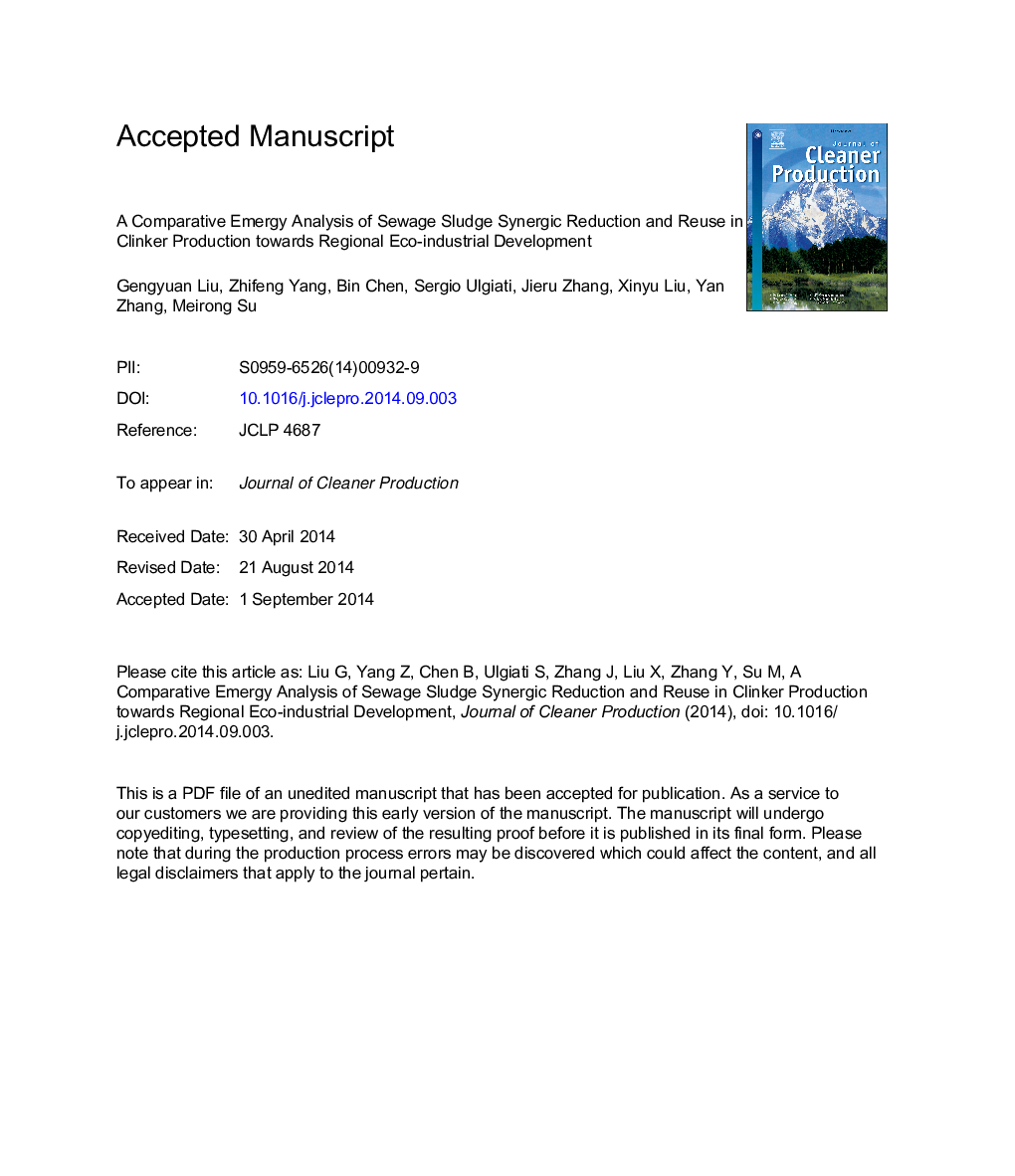| کد مقاله | کد نشریه | سال انتشار | مقاله انگلیسی | نسخه تمام متن |
|---|---|---|---|---|
| 8103557 | 1522143 | 2015 | 29 صفحه PDF | دانلود رایگان |
عنوان انگلیسی مقاله ISI
Scenarios for sewage sludge reduction and reuse in clinker production towards regional eco-industrial development: a comparative emergy-based assessment
ترجمه فارسی عنوان
سناریوهای کاهش لجن فاضلاب و استفاده مجدد از آن در تولید کلینکر به سمت توسعه اقتصادی منطقه ای صنعتی: ارزیابی مبتنی بر تطبیقی
دانلود مقاله + سفارش ترجمه
دانلود مقاله ISI انگلیسی
رایگان برای ایرانیان
کلمات کلیدی
تجزیه و تحلیل ایمنی، درمان سینرژیک کاهش اثر، بازیافت لجن فاضلاب،
موضوعات مرتبط
مهندسی و علوم پایه
مهندسی انرژی
انرژی های تجدید پذیر، توسعه پایدار و محیط زیست
چکیده انگلیسی
The synergic treatment benefit of reducing the amount of raw material and fuel and its contribution to the Greenhouse Gas (GHG) total emissions are of great interest for cement manufacturing. Additionally, it should be considered that the major sources of GHG in clinker production are CO2 from the calcination of raw materials and CO2 from fossil fuel combustion. Calcination CO2 can be reduced by the substitution of raw materials with noncarbonated calcium sources. Taking into account its potential reduction effect, a comprehensive research in the use of sewage sludge as a raw material alternative in clinker production, is required and is likely to provide valuable improvement. An emergy analysis to evaluate the synergic reduction effect of urban sewage sludge use as alternative raw material or fuel in clinker production was carried out. The main steps of the synergic treatment process, namely (1) sewage sludge treatment and (2) its transport to clinker production, were assessed by means of the emergy accounting approach. This evaluation aimed to assess the environmental resource demand in terms of equivalent solar energy, extending the energy quality hierarchy principle from ecosystems to eco-industrial process. The achievable synergic reduction effects, in terms of alternative raw material or fuel and recycling process, due to four different scenarios of sludge treatment and energy recycling, are analyzed in this study. The resulting unit emergy values of cement were compared with previous emergy assessments in order to highlight how emergy analysis is sensitive to local context and reference system's boundaries. Emergy Yield Ratio (EYR) with and without accounting for additional emergy investment due to damages caused by the process were calculated and discussed as comprehensive indicators of process sustainability. Results show that if the environmental impact is accounted for, the EYR drops significantly, thus suggesting that polluting emissions greatly increase the system's demand for additional resources from outside to repair damage and replace lost natural and human-made capital (the latter amounting to about 10% of the total emergy investment). The use of emergy accounting and LCA provides indices that allow a quantitative metrics of eco-industrial sustainability and environmental impact reduction.
ناشر
Database: Elsevier - ScienceDirect (ساینس دایرکت)
Journal: Journal of Cleaner Production - Volume 103, 15 September 2015, Pages 371-383
Journal: Journal of Cleaner Production - Volume 103, 15 September 2015, Pages 371-383
نویسندگان
Gengyuan Liu, Zhifeng Yang, Bin Chen, Jieru Zhang, Xinyu Liu, Yan Zhang, Meirong Su, Sergio Ulgiati,
